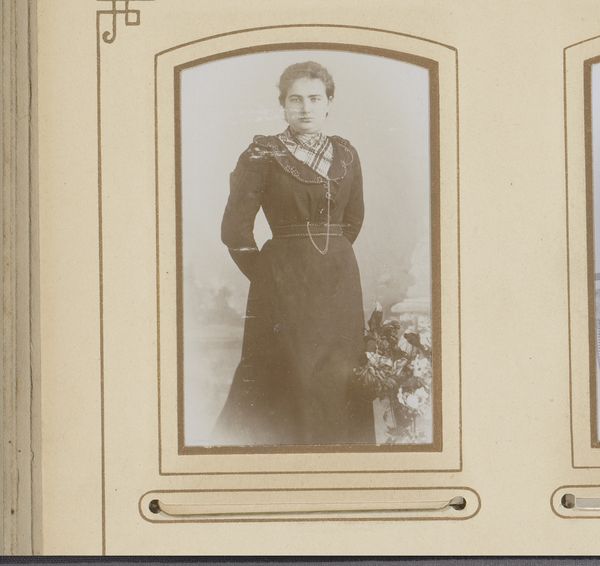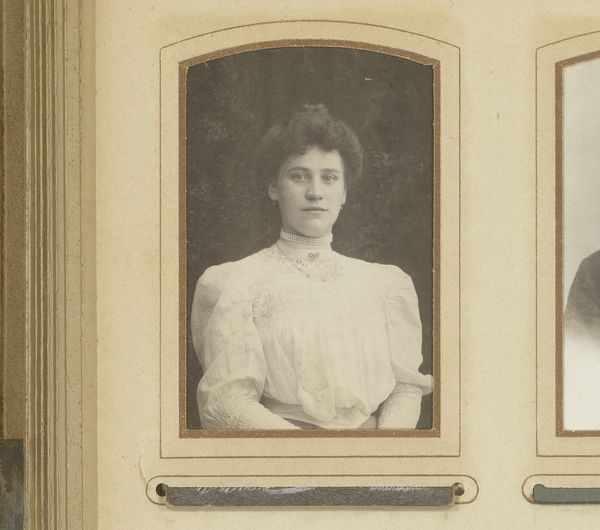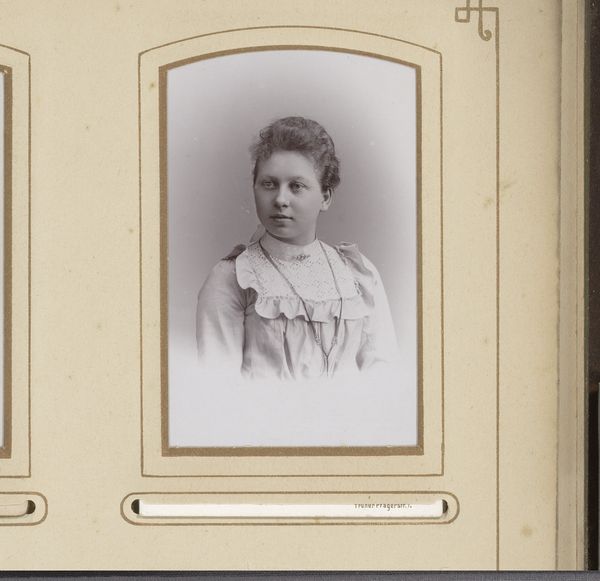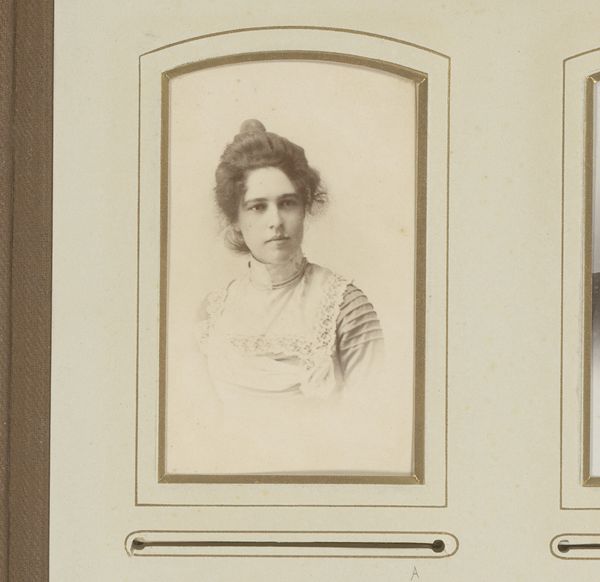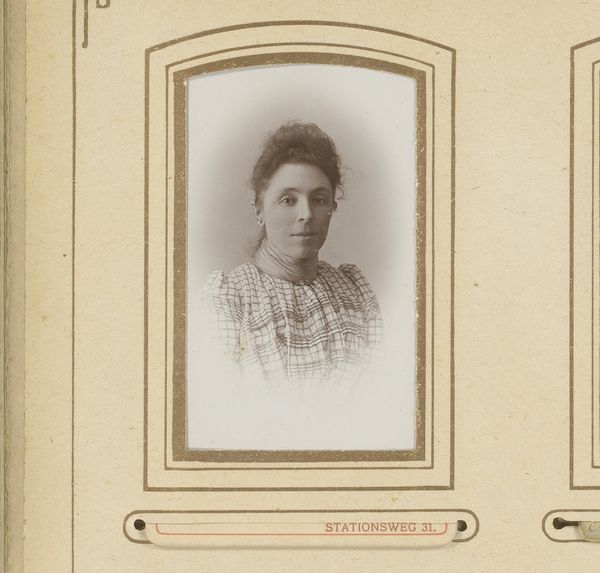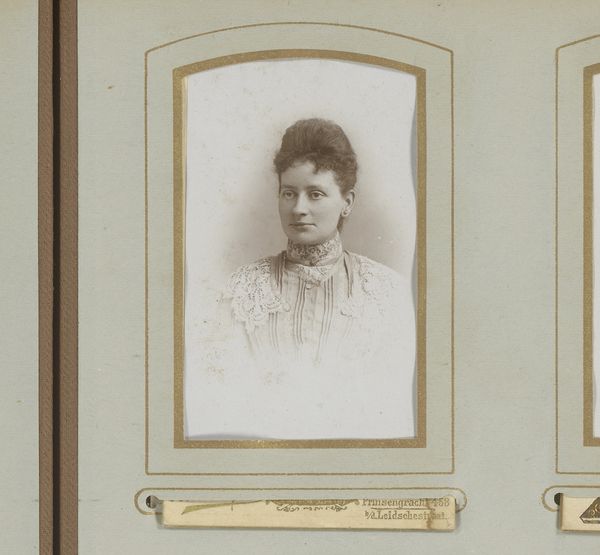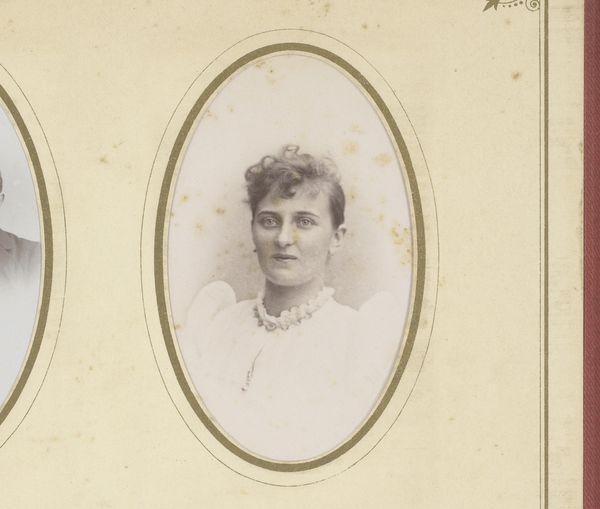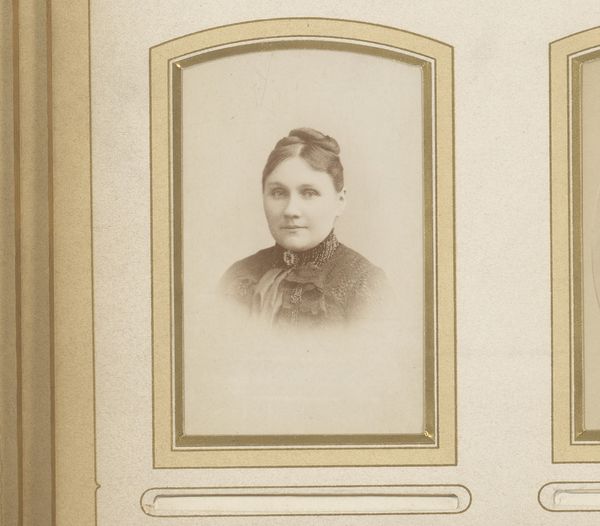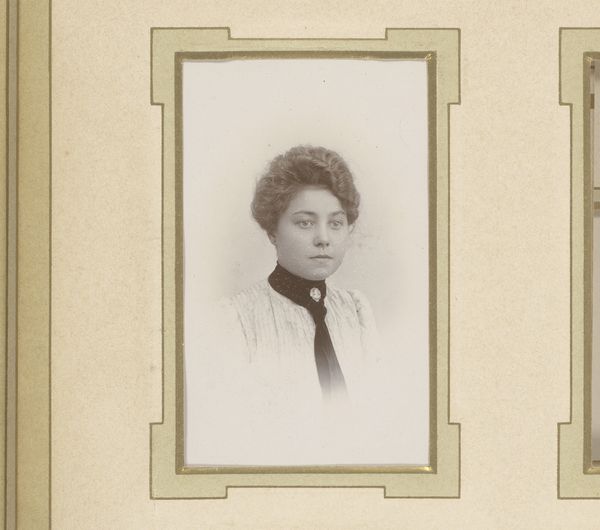
photography
#
portrait
#
photography
Dimensions: height 83 mm, width 52 mm
Copyright: Rijks Museum: Open Domain
Editor: This is "Portret van een vrouw," a photographic portrait created sometime between 1890 and 1910, likely by Max Beyerle. It has a certain intimacy about it, doesn't it? What strikes you about this piece? Curator: What I notice is how this portrait situates itself within the shifting landscape of representation and access in the late 19th century. Photography was becoming increasingly accessible to the middle class. This image speaks to the growing desire for personal documentation and memorialization. What kind of statements were the individuals commissioning the art trying to make? Editor: That's interesting! It makes me think about the sitter’s dress and the photographic style. Curator: Exactly. The subject's clothing, her pose, the sepia tone – these were all deliberate choices. This can be interpreted as an early form of social media: presenting oneself in a desired light within the bounds of social convention, but also seeking recognition as a distinct individual. The frame and photo itself feel like they exist together. Why do you think it matters that it is within the album? Editor: Perhaps it suggests a more private, intimate viewing experience versus a public declaration. It might also mean this was meant to preserve an individual's memory for the benefit of her loved ones. Curator: Precisely! The very act of placing the photo in an album transforms its meaning. We move from individual self-representation to collective memory, filtered through family narratives. It raises the question: how do institutions shape our understanding of these photos today, removed from their original contexts? Editor: I've never thought about it that way! This artwork has made me think more critically about not just the image, but about the intent of those who created and experienced the artwork back in its time. Curator: And that consideration, to bring it into today's museum environment, brings layers of consideration of access and power and politics.
Comments
No comments
Be the first to comment and join the conversation on the ultimate creative platform.
